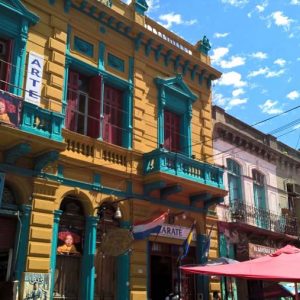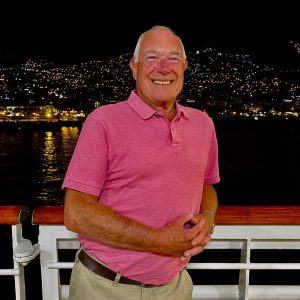A century on from the Great War
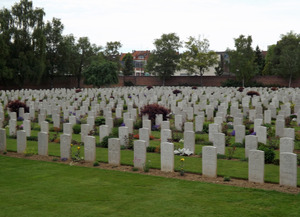 The north east corner of France, close to the border with Belgium, was the site of the most appalling slaughter of mankind during the Great War. This district is called Nord, Pas de Calais and France is commemorating a century this year since the start of World War One. As this chapter begins to slide into the murky ether of history, present generations should not forget recent family connections that they may have with this event.
The north east corner of France, close to the border with Belgium, was the site of the most appalling slaughter of mankind during the Great War. This district is called Nord, Pas de Calais and France is commemorating a century this year since the start of World War One. As this chapter begins to slide into the murky ether of history, present generations should not forget recent family connections that they may have with this event.
I am 62 and remember my grandfather very well. He served in the Great War at Vimy Ridge as a gunner in the Royal Artillery with the British army. He witnessed the wholesale destruction of life in the trenches on both sides. He survived the war and was discharged from the army in 1918 having been totally deafened and poisoned by gas attacks. He ran a successful business as a civilian after the fighting and drove his car almost every day until he died in 1967. Despite his experience, he made the most of his life and did not appear to suffer any post traumatic disturbance. I often think of the way I admired him when he was alive. I have often considered the human tragedy of the Great War.
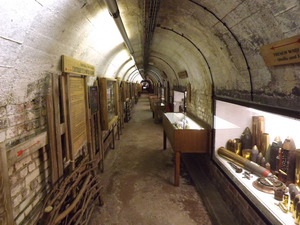 Most of the Western Front, the dividing line between the Allied forces and the German army, lay in the Nord, Pas de Calais region. Visit this district and you will find remaining traces of the conflict. Sections of the trenches are still visible as undulations in the fields. French farmers, even to this day, continue to plough up left over relics, rotting equipment and even unexploded devices from the dark days between 1914 and 1918.
Most of the Western Front, the dividing line between the Allied forces and the German army, lay in the Nord, Pas de Calais region. Visit this district and you will find remaining traces of the conflict. Sections of the trenches are still visible as undulations in the fields. French farmers, even to this day, continue to plough up left over relics, rotting equipment and even unexploded devices from the dark days between 1914 and 1918.
Vimy Ridge is at the northern end of this French region. This was the site where over 11000 Canadian soldiers lost their lives. Visitors can see preserved trenches just as they were during the war. Much of the land though, is still closed off to the public due to the continued presence of explosive devices.
If you travel to the town of St. Omer, a little south east of Calais, you can find an active civil aerodrome. It is historic in a real sense in that it was the headquarters of the Royal Flying Corps, the original British air power that fought so gallantly as part of the Allied force. St. Omer aerodrome was the location of over 50 flying squadrons at varying times and traces of their existence can still be seen. Major Trenchard, later Lord, served as a pilot with the RFC at St. Omer. He later became the founder (or Father as he is known today) of the Royal Air Force that we have in Britain. Visit the monument to the RAF that stands at the entrance to the aerodrome and reflect on the three week life expectancy of young RFC pilots in France in 1916.
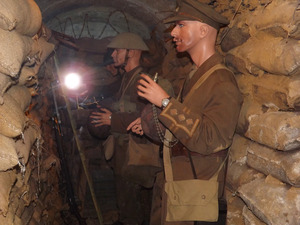 Fromelles is a significant Great War location to visit. This town is a little further to the south east and just to the west of Lille. On July 19, 1916, Australian soldiers launched a battle to divert enemy attention away from large scale conflict around the Somme basin. It failed badly and over 5000 Australian soldiers lost their lives along with 1500 British men. The Germans hastily put their bodies into a mass grave in Pheasant Wood, close to Fromelles, to prevent the spread of disease. This grave was only discovered in 2008 and all of the bodies are being separately identified and individually re-buried close by. A poignant museum and monument to the Australians has been erected at the cemetery attracting many visitors from the other side of the world.
Fromelles is a significant Great War location to visit. This town is a little further to the south east and just to the west of Lille. On July 19, 1916, Australian soldiers launched a battle to divert enemy attention away from large scale conflict around the Somme basin. It failed badly and over 5000 Australian soldiers lost their lives along with 1500 British men. The Germans hastily put their bodies into a mass grave in Pheasant Wood, close to Fromelles, to prevent the spread of disease. This grave was only discovered in 2008 and all of the bodies are being separately identified and individually re-buried close by. A poignant museum and monument to the Australians has been erected at the cemetery attracting many visitors from the other side of the world.
Montreuil sur Mer is an elegant town on the coast close to Abbeville at the southern end of Nord, Pas de Calais. Montreuil became the headquarters of the British Army under General Haig in 1916. You can view a splendid monument to him astride his horse on the town square. France admires and maintains so well all the features and reminders of the conflict that killed so many of her own soldiers.
Just outside the southern boundary of Pas de Calais is the town of Albert. This town suffered much destruction in WW1 and now is home to an underground museum commemorating the Great War. The Somme 1916 Trench museum is located in the tunnel complex running under the streets. It features so many fascinating reminders of the war. Discarded weapons, uniforms and military equipment provide much insight to such a terrible period. You can see surviving food containers from the time and reconstructed trench scenes to give an idea of the ghastly living conditions that all soldiers had to endure.
This year, Calais Nord is recalling the conflict with a number of events around the town of Bethune close to Lille. Bethune was pretty well on the Western Front during the Great War and is an appropriate place to remember this period of history.
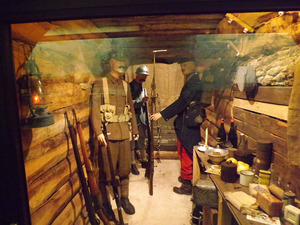 There will be battlefield coach tours in the region of the Lys River. These tours will include the splendid Commonwealth War Memorial and Graves at Le Touret. This cemetery contains the bodies of a number of German soldiers as well, each with their own marked headstone. The tours will visit the Portuguese National Cemetery at the village of Richebourg. Many Portuguese soldiers died whilst fighting with the Allies. They have their own outstanding memorial maintained by the Commonwealth War Graves Commission.
There will be battlefield coach tours in the region of the Lys River. These tours will include the splendid Commonwealth War Memorial and Graves at Le Touret. This cemetery contains the bodies of a number of German soldiers as well, each with their own marked headstone. The tours will visit the Portuguese National Cemetery at the village of Richebourg. Many Portuguese soldiers died whilst fighting with the Allies. They have their own outstanding memorial maintained by the Commonwealth War Graves Commission.
Coach tours will also stop at the substantial monument to Indian soldiers who lost their lives fighting alongside Commonwealth troops. This memorial very much reflects the Indian architectural style and culture.
Visitors can also join a walking tour of Bethune starting from the ‘Grand Place’ and moving on to the surrounding streets. Bethune symbolised French resistance and stood free for almost all of the Great War whilst under occupation by the Allied forces. It was only right at the end that so much destruction took place in the town during the final furious fighting. Other coach tours are also being organised to visit Givenchy and Festubert, villages so appallingly ravaged and only much later reconstructed.
Coach tours for schools will also take place. The French wish their children to be aware of the pitiful loss of life that occurred in such recent history on their own doorstep. For more information on these events, visit www.visitbethune.com.
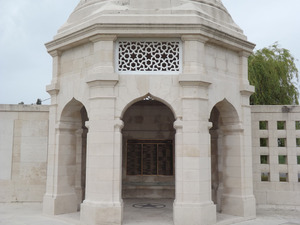 The Great War really was a world war. Soldiers principally from France, Britain, Germany, Canada, Australia, Portugal and India were involved. Overall though, more than one hundred other nationalities also took their place. Associated conflicts at the time involved other parts of the world. Eastern Europe, the Middle East, Africa and China were all somehow implicated. It was the appalling slaughter, however, in the trenches of Nord Pas de Calais that destroyed and changed the lives for so many millions for ever. It was thought to be the war that ended all wars. Somehow it wasn’t.
The Great War really was a world war. Soldiers principally from France, Britain, Germany, Canada, Australia, Portugal and India were involved. Overall though, more than one hundred other nationalities also took their place. Associated conflicts at the time involved other parts of the world. Eastern Europe, the Middle East, Africa and China were all somehow implicated. It was the appalling slaughter, however, in the trenches of Nord Pas de Calais that destroyed and changed the lives for so many millions for ever. It was thought to be the war that ended all wars. Somehow it wasn’t.
The last survivor of the Great War was British. His name was Harry Patch and he died recently on the 25 July 2009. He was 111 years old and, briefly, was the oldest man in Europe. He fought in the trenches during the furious Battle of Passchendaele. He took to his grave the last remaining consciousness of the worst slaughter humanity has ever imposed on itself. Most would say, all for nothing. Over fourteen and half million people lost their lives as a result of the Great War. Northern France will be commemorating the Great War rather than celebrating victory. It will be a sobering place to visit over the next few years.


